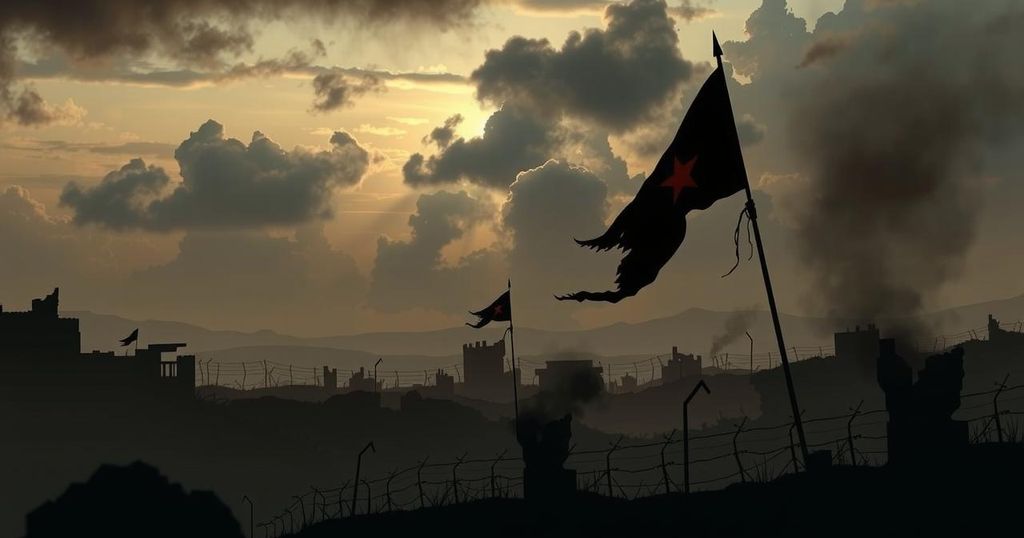Understanding the Civil War in Sudan: A Call for Comprehensive Peace Solutions
The civil war in Sudan, rooted deep in the nation’s colonial past and characterized by ethnic, religious, and political strife, has led to immense suffering and displacement. The conflict saw its first significant escalation pre-independence, followed by two brutal civil wars and ongoing humanitarian crises exacerbated by political instability since the overthrow of long-time dictator Omar al-Bashir in 2019. Despite the dire situation, pathways to peace exist, contingent upon comprehensive dialogue and substantial governance reforms.
The ongoing civil war in Sudan has profound implications not only for the nation itself but also for the stability of the broader region. Originating from a complex interplay of ethnic, religious, political, and economic grievances, the conflict has resulted in immense suffering for millions. Since the country’s independence from British-Egyptian rule in 1956, Sudan has been characterized by stark divisions between its northern and southern regions—ethnic and religious lines that further incited violence over decades. The First Sudanese Civil War, commencing in 1955, signified the first major clash between the northern government and southern rebels seeking autonomy. Although the 1972 Addis Ababa Agreement temporarily mitigated tensions, they resurfaced with greater intensity during the Second Sudanese Civil War (1983-2005). The previously signed agreement was violated, leading to a brutal conflict fueled by the imposition of Sharia law by then-President Jaafar Nimeiry. This war resulted in over two million fatalities and the displacement of millions more, ultimately concluding with the Comprehensive Peace Agreement, which facilitated the formation of South Sudan in 2011—a move that did not resolve the multifaceted issues within Sudan. The current phase of conflict, which erupted in 2019 following the ousting of long-standing dictator Omar al-Bashir, has revealed deep-seated divisions within Sudanese society. The establishment of a transitional government intended to steer the nation towards democratic governance quickly deteriorated. A military coup led by General Abdel Fattah al-Burhan in October 2021 exacerbated the turmoil, resulting in mass protests calling for a return to civilian rule. The military’s violent suppression of dissent ignited further conflicts, particularly among various armed groups and ethnic factions, propelling Sudan into a humanitarian crisis marked by rampant inflation and widespread poverty. The roots of the enduring Sudanese conflict include ethnic and regional disparities, political instability, economic mismanagement, and external influences. The central government continues to predominantly favor Arab elites, leaving other regions neglected and disenfranchised. Furthermore, the absence of consistent governance has allowed rebel factions to gain traction, complicating peace efforts. Additionally, the economic deterioration attributable to the loss of oil revenues and international sanctions has perpetuated discontent among the populace. The involvement of international actors cannot be overlooked. Sudan’s geopolitical significance draws interest from various global powers and neighboring nations, complicating the path to resolution. Despite these challenges, pathways to peace remain feasible. Solutions must focus on addressing the conflict’s root causes, promoting inclusive dialogue among all stakeholders, and implementing substantial economic and political reforms. In conclusion, while Sudan’s civil war presents a daunting challenge with its historical roots and complex dynamics, the potential for a more stable and prosperous future exists. However, achieving this outcome necessitates unwavering commitment from both Sudanese leadership and international partners, fostering an environment conducive to recovery and reconciliation.
The conflict in Sudan has its origins in the country’s colonial history and subsequent governance challenges. Following independence in 1956, inherent divisions between northern and southern Sudan, primarily along ethnic and religious lines, led to sustained violence. The complexity of the conflict is compounded by political instability characterized by coups, authoritarian governance, and ongoing economic struggles. The evolution of the civil war has seen various phases, each marked by significant humanitarian crises that continue to plague the nation. As Sudan grapples with multifaceted issues, the critical need for effective solutions has become increasingly apparent, requiring a cohesive effort from all parties involved.
The Sudanese civil war, with its intricate historical roots and implications for both the nation and the surrounding region, remains a significant international concern. Addressing the root causes of the conflict, fostering comprehensive dialogue among diverse stakeholders, and committing to long-term reforms are essential components in the pursuit of lasting peace. As the complexities evolve, the roles of national leaders and international stakeholders will be crucial in shaping a more stable future for Sudan, enabling it to recover from years of turmoil.
Original Source: www.mmegi.bw








Post Comment